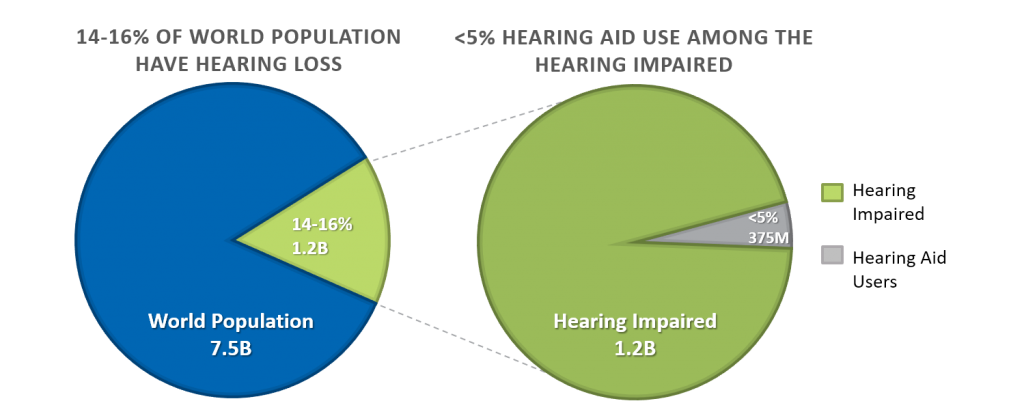Better Hearing is Now Within Reach – Part 1
January 15, 2019The Need, the Conventional Solution, and the Despair
The World Health Organization estimates that approximately 15% of the world’s population (that’s around 1.2 billion people!) suffers from hearing loss of greater than 25 decibels. Even though hearing loss is typically associated with old age, the majority of sufferers are under the age of 65. It is well known that hearing loss is a terrible experience for an individual and has multiple consequences. Children with hearing loss are likely to experience delayed speech development, impaired communication and reduced cognitive skills. In adults, hearing loss has been linked to poorer job performance and, as a result, lower salaries. In the elderly, hearing loss is associated with an increased risk of dementia, falls, depression, social isolation and loneliness. These problems impose a heavy financial burden on the society.

There is good news, though. Research shows that 95% of hearing impaired people can be helped by hearing amplification. The solution that jumps to mind immediately is hearing aids. Hearing aids have a long history: from hearing trumpets used over 100 years ago, through the development of the first wearable electronic devices, to the modern era of small, digital devices of various styles. Yet, hearing aids are used by less than 20% of hearing impaired people in developed countries, and less than 3% in low income countries. Why?
Why Aren’t More People Using Hearing Aids?
- Extremely high cost. A pair of hearing aids costs between $2000-$8000 dollars. Unless it is fully covered by insurance, it is not surprising that most people hesitate before buying them.
- Social stigma. Justified or not, people feel that wearing hearing aids will make them look older or handicapped. It is interesting that this feeling does not actually depend on the age. Many elderly people refuse to wear hearing aids. We all want to be young.
- Limited functionality. We’re used to multi-functional electronic devices that can do much more than just their main functionality. Smartphones are a classic example, but we have others, such as: radios, smartwatches or fitness bracelets. Basic, reasonably priced hearing aids can only do voice amplification.
- Performance. 20% of people who buy hearing aids return them. Although they are badly needed, these devices don’t help them. 17% of those who decide to keep their hearing aids are not satisfied.
What Can Be Done to Surmount These Obstacles to Better Hearing?
In the next post in this “Hearing Better is Now Within Reach” blog series, we’ll look at an unorthodox approach that addresses all four of these obstacles to bring hope to those experiencing mild to moderate hearing loss.

